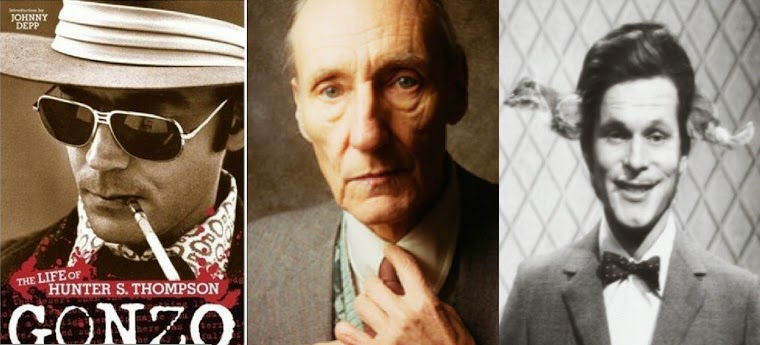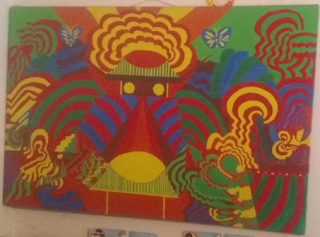By SJ Otto
I found this article which is called, “How to Be a Modern Hippie,” by Colleen. I found it interesting because I was somewhat of a Hippie starting in my high school days and in my early 20s. In some ways, I still am today. I found this article in with another Hippie story, “What Are Hippies Called Today?” Hippies were a big thing in the 1960s. By the 1970s we were calling ourselves Freaks. We were a little different from the Hippies, but we were really pretty similar. By the 1970s we had to have out own identity that differentiated us from the Hippies. We couldn’t just imitate people from ten years past.
Today, there is no “Freak scene.” The Hippies today are not the same as those that were visible in San Francisco, during the Haight-Ashbury days. I visited Haight-Ashbury in the late 1980s and there was little, if anything, left of the Hippie culture at that time. It was like I was going there to see “where it used to be happening.” The Freaks were a post-Hippie phenomenon, so for the sake of this article, I will look at what the author sees as people who are today, referred to as Hippies. I have a close friend, Tom Saad, who is always telling me that he sees himself as a Hippie today.

He has long hair. Both of us probably considered ourselves to be Hippies in our high school days and fallowing. Originally much of that was a cultural thing. We were counter-culture people along with many of our friends were. We all had long hair, smoked pot, took LSD at times and we listened to rock and roll of that time period. Colleen’s article mentioned Led Zeppelin and Jefferson Airplane. Tom always liked Led Zeppelin and I always liked Jefferson Airplane. Today, Tom listens mostly to Led Zeppelin. I still like Jefferson Airplane but I also like punk rock, such as Die Toten Hosen.
Much of what I have written about, so far, has been cultural things such as music, hair styles and drug use.
Drug use was an important part of our experiences in the beginning. Colleen writes a lot about the clothes Hippies wore then and now. But for me there were some other things. Probably one of the most important things I took away from the Hippie experience was my views on politics. There is little doubt that these cultural movements influenced my political views today.
For example, Colleen wrote:
“Hippies are known for their compassion toward people, but also animals in particular. Some would even say that you care too much.
You simply love all creatures because they are not able to defend themselves, and hippies have always thought that they should be a voice for the voiceless. That’s why one of the biggest signs that you are a hippie is actually your compassion toward animals.
You refuse to wear leather and wool simply because you don’t want the dead skin of an animal on you. Every time you and your family go out to buy groceries, you always reach for the organic options and that’s what makes you so healthy. You might even operate an organic garden
Where you grow your own vegetables and fruits because you believe that it’s the healthiest way to live.
You know that the political situation isn’t great and you always discuss with your friends the politicians now in power and what they’re doing.
You are very educated in conspiracy theories and you always talk about the things that you would do better if you were president.
Whether it’s dancing, running, or practicing yoga, you simply love to move your body to the rhythm of the universe”.
My politics have evolved since I was in high school. As with the Freaks, I was an anarchist, in those days. Today I am a Marxist-Leninist-Maoist. The ideals of communism are not that much different from anarchism. Under the final stage of human development, in accordance with Marxist communist theory, the state withers away. So my beliefs aren’t really all that different from my high school days. They are different in that I now believe we need a state, at least for today. But the part about compassion toward people and supporting the voiceless is a definite part of my personality and my out look on politics. My Marxist ideals are simply an extension of my ideas on compassion. I have compassion for people and I envision a world were there is peace, equality and people are all taken care of each other—no hunger and no lack of medicines for those who need it. Politics should lead to happiness.
The one big difference is that Colleen writes about Hippies caring about animals. I’ve always liked animals. I studied Hinduism in high school. I never became a Hindu. But I did adopt some of those beliefs. One of them is that animal life has value. I won’t kill an animal, not even an insect, unless it is necessary. I avoid any practice that causes pain to animals. I try to respect them. I am not a vegetarian, but I believe in respecting those animals that we eat. I avoid anything the causes such animals any pain, such as boiling lobsters or eating veal which is a tortured animal. I only kill insects that are a nuisance, such as roaches and mosquitoes. I don’t kill spiders in my house or insects that cause no harm.
That is different from Marxist. Marxists emphasise the importance of humans and humans are much more important than animal life. Some Marxists I have come across are against (sometimes antagonistic to) animal rights and animal rights activists. I agree that humans are more important. But I disagree with those who see little or no importance to animal life.
But back to the Hippie article, Colleen discusses the rejection of traditional mainstream values:
“Their rejection of mainstream values was surprising because they were the very people who were in position to gain the most—in jobs,
political access, and money—from the existing system. That these young people chose to drop out from lives in which they had clear advantages was a sign to many that perhaps something really was wrong with the system.
The civil rights movement was attracting national attention by the mid-1950s, and the New Left became a factor in American politics in 1962
following the release of its “Port Huron Statement,” a stirring announcement of youthful political idealism.”
Again, here is something I have in common with the Hippies. I definitely feel outside the mainstream. I definitely have little interest in the pursuit of money and I don’t aspire to be wealthy as I am supposed to, according to the system and its supporters.
Colleen wrote about some of the theoreticians of the Hippies. Some such as Timothy Leary and Allen Ginsberg were not that political. Others, such as Abbie Hoffman and Jerry Rubin were very political. Rubin turned to the right after the Hippies and Yippies began to die out. Hippies were a strange movement that included some leftists and some cultural figures who had no interest in politics at all. Others such as Rubin, ended up as political conservatives.
I do have some ideas I got from being a Hippie that are not political, besides my views on animals. One example is haircuts. We all had long hair. My hair is not really that long. But I still feel that it is ridiculous that men today are expected to all have the same kind of hair cut. Women can wear their hair at any length. But men are expected to have real short hair. Most today have real short hair on the side of their heads and their ears all stick out. I call it the “white wall look.” The hair stops way above the ear and thins out to the point of looking like it is shaved. The other day I sat in front of my TV and looked at all the men with their “white wall look.” Some men have long hair on the top, but it is almost always short on the sides. It is like a uniform. I for one don’t like my ears showing. I don’t have long hair, but I avoid the “white wall look.” Tom still has long hair in a pony tail.
I suppose there are some young Hippies around today. For many Hippies, as my self, we are in our 60s, 70s and older. We are a dying bread. But we are still Hippies. Some young Marxists I have seen, commenting on line, have said they see Hippies as being conservative, right-wing, reactionary. I don’t know how they formed these opinions but I don’t agree at all. In the 60s and 70s we defied the status quo. We challenged the system on many levels. We challenged the culture and the politics. We were often met with opposition and it was not always pleasant or benevolent. Any one who wants to see examples of that opposition can see the move Easy Rider. The Hippies were often treated badly and it can be seen in that movie.
Hippies had an impact on our lives since the 1960s. We have some movements, such as the Revolutionary Communist Party, that rose directly from the organizations of the 1960s. I’m glad to have been a part of that experience. The Hippies today are small in number compared to those of the 1960s and 1970s. Many of those early hippies cut their hair, put on a suit and got a high paying job. They lost all their early values. Some of us have retained at least some of those values. I’m proud to be one of those.
Here I sit in a counter-culture bar, Kirby's, with my wife, Cam Gentry. The above picture ^ is Tom Saad.























